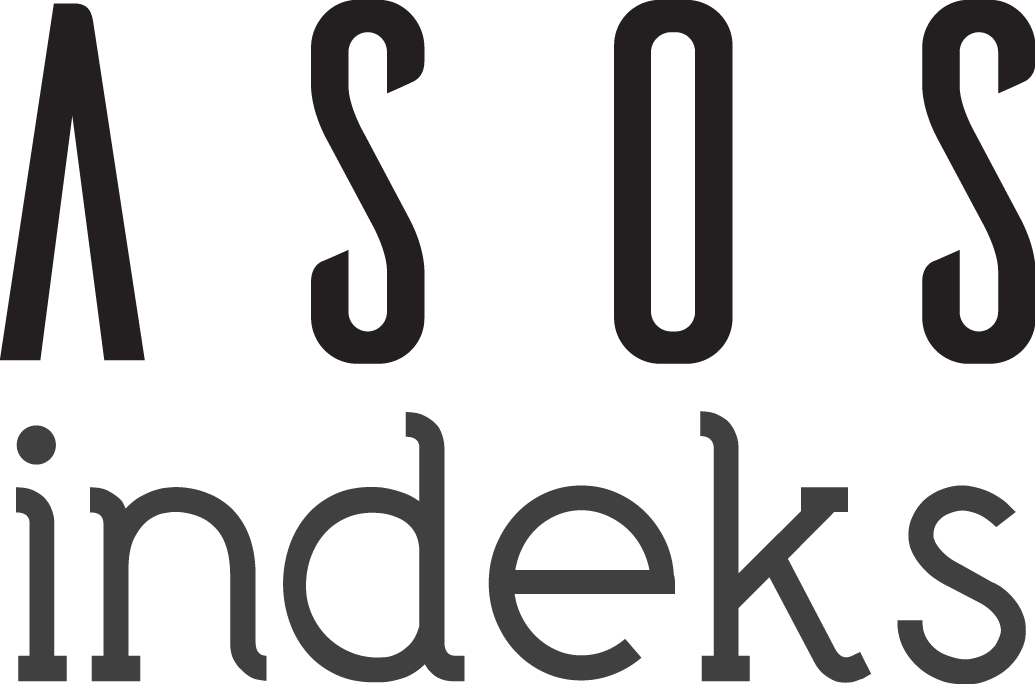Evaluation of risk factors contributing to device-related pressure ulcer development in critically ill patients
Abstract
Aims: Device-related pressure ulcers are one of the most common complications observed in patients treated in intensive care units (ICUs). These ulcers negatively impact patient comfort and significantly increase treatment costs. To prevent and manage pressure ulcers caused by medical devices, it is essential to thoroughly understand the associated risk factors. This study aims to determine the prevalence of device-related pressure ulcers in critically ill patients and evaluate the risk factors contributing to their development.
Methods: The study included 91 patients who were monitored with non-invasive mechanical ventilation (NIMV) in the pulmonary intensive care unit between January 1, 2021, and December 31, 2021. The patients’ demographic characteristics, nutritional status, body-mass index (BMI), biochemical parameters, and Braden pressure ulcer risk assessment scale scores of the patients were retrospectively analyzed.
Results: The findings revealed no direct relationship between the duration of medical device use and the development of pressure ulcers. However, an increase in the number of days masks were used was significantly associated with the progression of pressure ulcer stages, particularly from early to advanced stages. The study also found that the Braden scoring system was insufficient in predicting pressure ulcers caused by oronasal masks, while patients with higher blood urea nitrogen (BUN) levels tended to have ulcers that remained at early stages without progression. No significant association was found between pressure ulcer development and nutritional status, albumin levels, BMI, or corticosteroid use. However, prolonged ICU stays were associated with the progression of pressure ulcers to more advanced stages.
Conclusion: These results emphasize the importance of optimizing the duration of device usage and selecting appropriate devices to prevent device-related pressure ulcers.
Keywords
Device-related pressure ulcer non-invasive mechanical ventilation Braden score intensive care unit risk factors
Thanks
We would like to thank Dr. Çakırhava Menteş for her invaluable assistance in the design of the tables
References
- Salcido R, Hart D, Smith AM. The prevention and management of pressure ulcers. In: Braddom RL, ed. Physical Medicine & Rehabilitation. Philadelphia: WB Saunders Company; 1996.
- Yarkony GM, Kirk PM, Carlson C, et al. Classification of pressure ulcers. Arch Dermatol. 1990;126(9):1218-1225. doi:10.1001/archderm.1990. 01670330098016
- Sivrioğlu K, Özcan O. Basınç yaraları. In: Oğuz H, Dursun E, Dursun N, eds. Tıbbi Rehabilitasyon. Ankara: Nobel Tıp Kitabevleri; 2004.
- Doley J. Nutrition management of pressure ulcers. Nutr Clin Pract. 2010; 25(1):50-60. doi:10.1177/0884533609359294
- Nola GT, Vistnes LM. Differential response of skin and muscle in the experimental production of pressure sores. Plast Reconstr Surg. 1980; 66(5):728-733. doi:10.1097/00006534-198011000-00008
- Magnan MA, Maklebust J. Braden Scale risk assessments and pressure ulcer prevention planning: what's the connection?. J Wound Ostomy Continence Nurs. 2009;36(6):622-634. doi:10.1097/WON. 0b013e3181bd812c
- Black JM, Kalowes P. Medical device-related pressure ulcers. Chronic Wound Care Management Res. 2016;3:91-99.
- Coyer FM, Stotts NA, Blackman VS. A prospective window into medical device-related pressure ulcers in intensive care. Int Wound J. 2014;11(6): 656-664. doi:10.1111/iwj.12026
- Bergstrom N, Braden BJ, Laguzza A, et al. The Braden scale for predicting pressure sore risk. Nurs Res. 1987;36(4):205-210.
- Pınar R, Oğuz S. Norton ve Braden bası yarası değerlendirme ölçeklerinin yatağa bağımlı aynı hasta grubunda güvenirlik ve geçerliğinin sınanması. In: Uluslararası Katılımlı VI. Ulusal Hemşirelik Kongresi Kongre Kitabı. Ankara; 1998.
- Stoelting J, McKenna L, Taggart E, et al. Prevention of nosocomial pressure ulcers: a process improvement project. J Wound Ostomy Continence Nurs. 2007;34(4):382-388. doi:10.1097/01.WON.0000281654.40578.88
- Miller N, Frankenfield D, Lehman E, et al. Predicting pressure ulcer development in clinical practice: evaluation of Braden scale scores and nutrition parameters. J Wound Ostomy Continence Nurs. 2016;43(2):133-139. doi:10.1097/WON.0000000000000184
- Rashvand F, Shamekhi L, Rafiei H, Nosrataghaei M. Incidence and risk factors for medical device-related pressure ulcers: the first report in this regard in Iran. Int Wound J. 2020;17(2):436-442. doi:10.1111/iwj.13290
- Ferrari G, Gallo V, Panero F, Elia F, Aprà F. Late-breaking abstract: noninvasive positive airway pressure ventilation and risk of pressure ulcers in patients with acute respiratory failure. Eur Respir J. 2014; 44(Suppl 58):2081.
- Visscher M, White C, Jones J, et al. Face masks for noninvasive ventilation: fit, excess skin hydration, and pressure ulcers. Respir Care. 2015;60:1536-1547. doi:10.4187/respcare.04036
- Shahin E, Meijers J, Schols J, et al. The relationship between malnutrition parameters and pressure ulcers in hospitals and nursing homes. Nutrition. 2010;26(9):886-889. doi:10.1016/j.nut.2010.01.016
- Drake D, Swanson M, Baker G, et al. The association of BMI and Braden total score on the occurrence of pressure ulcers. J Wound Ostomy Continence Nurs. 2010;37:367-371. doi:10.1097/WON.0b013e3181e45774
- Chen F, Wang X, Pan Y, Ni B, Wu J. The paradox of obesity in pressure ulcers of critically ill patients. Int Wound J. 2023;20:2753-2763. doi:10. 1111/iwj.14152
- Graves N, Birrell F, Whitby M. Effect of pressure ulcers on length of hospital stay. Infect Control Hosp Epidemiol. 2005;26:293-297. doi:10. 1086/502542
- Theisen S, Drabik A, Stock S. Pressure ulcers in older hospitalised patients and its impact on length of stay: a retrospective observational study. J Clin Nurs. 2012;21(3-4):380-387. doi:10.1111/j.1365-2702.2011.03915.x
- Frankel H, Sperry J, Kaplan L. Risk factors for pressure ulcer development in a best practice surgical intensive care unit. Am Surg. 2007;73:1215-1217. doi:10.1177/000313480707301203
- Marum R, Meijer J, Ooms M, et al. Relationship between internal risk factors for development of decubitus ulcers and the blood flow response following pressure load. Angiology. 2001;52:409-416. doi:10.1177/ 000331970105200606
Kritik hastalarda cihaza bağlı bası yarası gelişiminde rol oynayabilecek risk faktörlerinin değerlendirilmesi
Abstract
Tıbbi cihazlara bağlı bası yaraları, özellikle yoğun bakım ünitesinde takip edilen hastalarda yaygın olarak görülen komplikasyonlardan biridir. Bu yaralar, hem hasta konforunu olumsuz etkiler hem de tedavi maliyetlerini artırır. Tıbbi cihaz kullanımına bağlı gelişen bu yaraların önlenmesi ve yönetimi için risk faktörlerinin iyi anlaşılması gerekmektedir.
Bu çalışma, kritik hastalarda tıbbi cihazlara bağlı bası yaralarının prevalansını belirlemeyi ve bu yaraların oluşumunda etkili olabilecek risk faktörlerini değerlendirmeyi amaçlamaktadır.
Çalışma, 1 Ocak 2021 ile 1 Aralık 2021 tarihleri arasında göğüs hastalıkları yoğun bakım ünitesinde Non-invaziv Mekanik Ventilatör (NİMV) kullanılarak takip edilen 91 hastayı kapsamaktadır. Hastaların demografik özellikleri, beslenme durumları, vücut kitle indeksleri (VKİ), biyokimyasal parametreleri ve Braden Bası Yarası Risk Değerlendirme Ölçeği skorları retrospektif olarak analiz edilmiştir.
Elde edilen bulgular, tıbbi cihaz kullanım süresi ile bası yarası gelişimi arasında doğrudan bir ilişki olmadığını göstermiştir. Ancak maske kullanım gün sayısındaki artışın, özellikle bası yaralarının evre ilerlemesi ile anlamlı bir şekilde ilişkili olduğu tespit edilmiştir. Çalışma, Braden skorlama sisteminin oronazal maskelere bağlı bası yaralarını öngörmede yetersiz olduğunu ortaya koyarken Kan üre azotu (BUN) yüksek olan hastalarda yaraların erken evrede kalıp ilerlemediğini ortaya koymuştur. Ayrıca beslenme durumu, albümin seviyeleri, VKİ ve kortikosteroid kullanımı ile bası yarası oluşumu arasında anlamlı bir ilişki bulunmamıştır. Bununla birlikte, yoğun bakımda yatış süresinin artışı, bası yaralarının daha ileri evrelere ilerlemesi ile ilişkilendirilmiştir.
Bu sonuçlar, tıbbi cihaz kullanımına bağlı bası yaralarının önlenmesi için cihaz kullanım sürelerinin optimize edilmesi, uygun cihaz seçiminin yapılmasının önemini vurgulamaktadır.
Keywords
Tıbbi cihazlara bağlı bası yarası Non-invaziv mekanik ventilasyon Braden skoru Yoğun bakım Risk faktörleri
References
- Salcido R, Hart D, Smith AM. The prevention and management of pressure ulcers. In: Braddom RL, ed. Physical Medicine & Rehabilitation. Philadelphia: WB Saunders Company; 1996.
- Yarkony GM, Kirk PM, Carlson C, et al. Classification of pressure ulcers. Arch Dermatol. 1990;126(9):1218-1225. doi:10.1001/archderm.1990. 01670330098016
- Sivrioğlu K, Özcan O. Basınç yaraları. In: Oğuz H, Dursun E, Dursun N, eds. Tıbbi Rehabilitasyon. Ankara: Nobel Tıp Kitabevleri; 2004.
- Doley J. Nutrition management of pressure ulcers. Nutr Clin Pract. 2010; 25(1):50-60. doi:10.1177/0884533609359294
- Nola GT, Vistnes LM. Differential response of skin and muscle in the experimental production of pressure sores. Plast Reconstr Surg. 1980; 66(5):728-733. doi:10.1097/00006534-198011000-00008
- Magnan MA, Maklebust J. Braden Scale risk assessments and pressure ulcer prevention planning: what's the connection?. J Wound Ostomy Continence Nurs. 2009;36(6):622-634. doi:10.1097/WON. 0b013e3181bd812c
- Black JM, Kalowes P. Medical device-related pressure ulcers. Chronic Wound Care Management Res. 2016;3:91-99.
- Coyer FM, Stotts NA, Blackman VS. A prospective window into medical device-related pressure ulcers in intensive care. Int Wound J. 2014;11(6): 656-664. doi:10.1111/iwj.12026
- Bergstrom N, Braden BJ, Laguzza A, et al. The Braden scale for predicting pressure sore risk. Nurs Res. 1987;36(4):205-210.
- Pınar R, Oğuz S. Norton ve Braden bası yarası değerlendirme ölçeklerinin yatağa bağımlı aynı hasta grubunda güvenirlik ve geçerliğinin sınanması. In: Uluslararası Katılımlı VI. Ulusal Hemşirelik Kongresi Kongre Kitabı. Ankara; 1998.
- Stoelting J, McKenna L, Taggart E, et al. Prevention of nosocomial pressure ulcers: a process improvement project. J Wound Ostomy Continence Nurs. 2007;34(4):382-388. doi:10.1097/01.WON.0000281654.40578.88
- Miller N, Frankenfield D, Lehman E, et al. Predicting pressure ulcer development in clinical practice: evaluation of Braden scale scores and nutrition parameters. J Wound Ostomy Continence Nurs. 2016;43(2):133-139. doi:10.1097/WON.0000000000000184
- Rashvand F, Shamekhi L, Rafiei H, Nosrataghaei M. Incidence and risk factors for medical device-related pressure ulcers: the first report in this regard in Iran. Int Wound J. 2020;17(2):436-442. doi:10.1111/iwj.13290
- Ferrari G, Gallo V, Panero F, Elia F, Aprà F. Late-breaking abstract: noninvasive positive airway pressure ventilation and risk of pressure ulcers in patients with acute respiratory failure. Eur Respir J. 2014; 44(Suppl 58):2081.
- Visscher M, White C, Jones J, et al. Face masks for noninvasive ventilation: fit, excess skin hydration, and pressure ulcers. Respir Care. 2015;60:1536-1547. doi:10.4187/respcare.04036
- Shahin E, Meijers J, Schols J, et al. The relationship between malnutrition parameters and pressure ulcers in hospitals and nursing homes. Nutrition. 2010;26(9):886-889. doi:10.1016/j.nut.2010.01.016
- Drake D, Swanson M, Baker G, et al. The association of BMI and Braden total score on the occurrence of pressure ulcers. J Wound Ostomy Continence Nurs. 2010;37:367-371. doi:10.1097/WON.0b013e3181e45774
- Chen F, Wang X, Pan Y, Ni B, Wu J. The paradox of obesity in pressure ulcers of critically ill patients. Int Wound J. 2023;20:2753-2763. doi:10. 1111/iwj.14152
- Graves N, Birrell F, Whitby M. Effect of pressure ulcers on length of hospital stay. Infect Control Hosp Epidemiol. 2005;26:293-297. doi:10. 1086/502542
- Theisen S, Drabik A, Stock S. Pressure ulcers in older hospitalised patients and its impact on length of stay: a retrospective observational study. J Clin Nurs. 2012;21(3-4):380-387. doi:10.1111/j.1365-2702.2011.03915.x
- Frankel H, Sperry J, Kaplan L. Risk factors for pressure ulcer development in a best practice surgical intensive care unit. Am Surg. 2007;73:1215-1217. doi:10.1177/000313480707301203
- Marum R, Meijer J, Ooms M, et al. Relationship between internal risk factors for development of decubitus ulcers and the blood flow response following pressure load. Angiology. 2001;52:409-416. doi:10.1177/ 000331970105200606
Details
| Primary Language | English |
|---|---|
| Subjects | Chest Diseases, Intensive Care |
| Journal Section | Research Articles [en] Araştırma Makaleleri [tr] |
| Authors | |
| Publication Date | March 23, 2025 |
| Submission Date | January 24, 2025 |
| Acceptance Date | March 21, 2025 |
| Published in Issue | Year 2025 Volume: 6 Issue: 2 |
TR DİZİN ULAKBİM and International Indexes (1d)
Interuniversity Board (UAK) Equivalency: Article published in Ulakbim TR Index journal [10 POINTS], and Article published in other (excuding 1a, b, c) international indexed journal (1d) [5 POINTS]
|
| ||
|
|
|
Our journal is in TR-Dizin, DRJI (Directory of Research Journals Indexing, General Impact Factor, Google Scholar, Researchgate, CrossRef (DOI), ROAD, ASOS Index, Turk Medline Index, Eurasian Scientific Journal Index (ESJI), and Turkiye Citation Index.
EBSCO, DOAJ, OAJI and ProQuest Index are in process of evaluation.
Journal articles are evaluated as "Double-Blind Peer Review".













